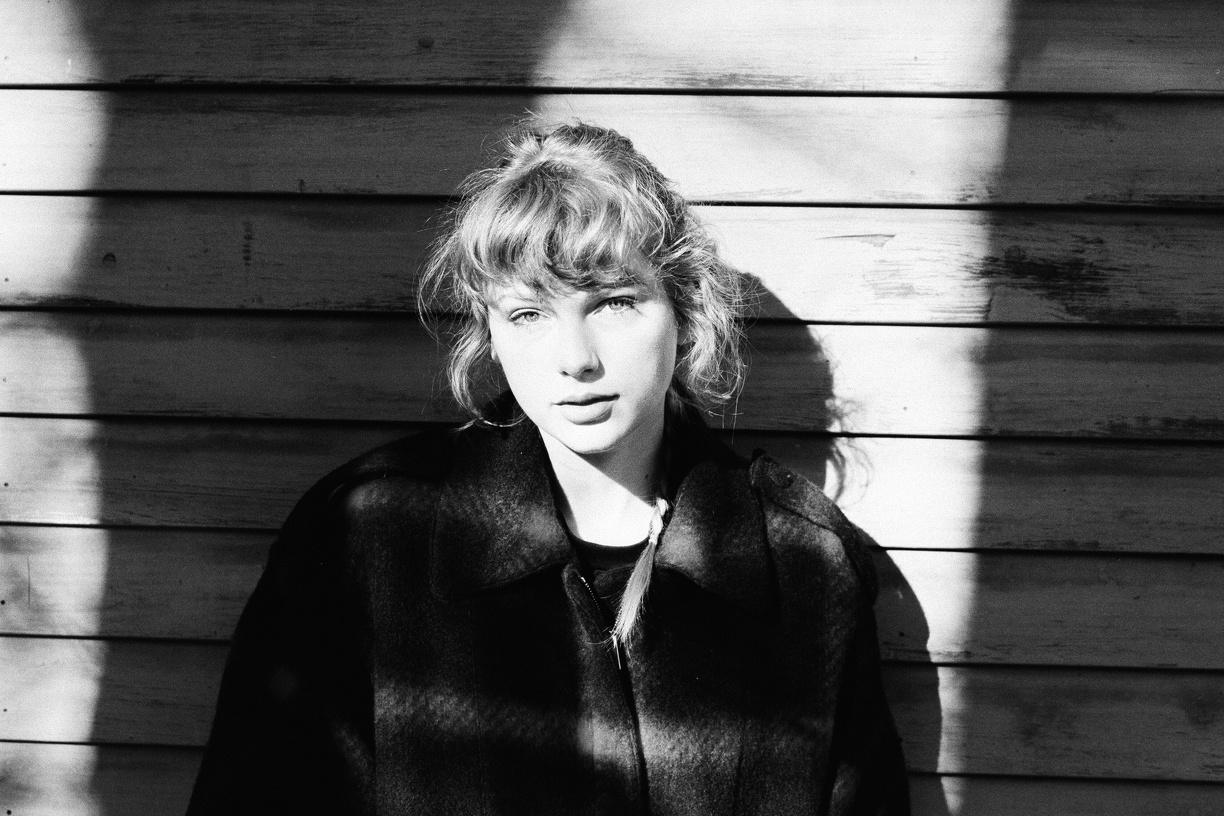By Katerina Taxiaropoulou,
Near the end of devastating 2020 and just five months after releasing Folklore, Taylor Swift surprised her audience with a second album, Evermore. This record was created spontaneously as an extension of Folklore’s mythopoeic universe, and it is a product of collaboration with none other than Aaron Dessner and Jack Antonoff. Presenting Evermore on Instagram, Swift explains how naturally the album occurred: “It feels like we were standing on the edge of the folklorian woods and had a choice: to turn and go back or to travel further into the forest of this music. We chose to wander deeper in” (Taylor Swift).
So, Evermore goes on to further explore the themes of love, heartbreak, and existential anxiety that the previous album included. However, as reviewer Beth Garrabrant notes, Evermore is “no ragbag of Folklore, B-sides, and throwaways” (USA TODAY). Instead, the record’s 17 songs make a brand-new garment, an anthology of intersecting tales about real and imagined characters.
Taking up Folklore’s themes of love-melancholy, the feeling of failure and disappointment following the loss of one’s innocence, maturer Evermore studies the process of a lost individual trying to find hope and love again. Of course, the road to self-recovery is quite rutty, and the difficulty of the journey often makes the driver give up and return to his or her initial spot.
- Healing: A Work in Progress
And I was catching my breath
Floors of a cabin creaking under my step
And I couldn’t be sure
I had a feeling so peculiar
This pain wouldn’t be for
Evermore
(Taylor Swift, quote from Evermore)
Evermore ends with the title track, a piano ballad performed by Taylor Swift and Justin Vernon which stands as “a beacon of hope” near the end of a “shitshow” that was 2020 (NME). As the main speaker, the female voice gives a personal testimony, explaining how her low state of mind makes her feel that all hope for the future is lost. She acknowledges that she is unable to move on with her life as she keeps obsessing over a traumatic event that happened in the past. In the manner of depression, emotional anguish becomes physical, and the speaker is often attacked by a deathly cold and an acute, seemingly never-ending pain.
After a sudden tempo shift, the female voice is joined by a male one in a call and response session, or, as reviewer Jon Caramanica has called it, “a black-box theater dialogue” (New York Times). In an increasingly intense atmosphere, the lights go on and off as the speakers are caught in a thunderstorm, her words falling like a shower of despair and his flashing back as a lightening of reason and hope. Slowly, the music becomes peaceful and the scenery bright. With the help of her partner, the female can see how the pain she is now feeling will not last forever.

Appearing somewhere around the middle of the track list, Happiness is an ambient, melancholic ballad about divorce and forgiveness. The song’s lyrics flow as “a stream of consciousness,” whereby the narrator, a betrayed woman, reflects on happy memories of her marriage, tries to empathize with her former husband and apologizes for her own part in the split (Insider). In the song, the narrator confesses how her fury made her unable to see facts before and that she cannot make the pain disappear by painting her former husband as a villain. He is, as she concludes, a good man who, facing his own demons, indeliberately caused her pain, much like she did to him.
Prompted by these lyrics, reviewer Claire Shaffer underlines how Swift here touches upon “more nuanced acts of forgiveness, complex personal histories, and the ability to visualize and know how a person can look in different shades of light” (Rolling Stone). So, although in a somber tone, by the end the narrator finds herself in the process of becoming a new person, and is assured that there will be happiness for her again.
- Finding Love Again
Now you hang from my lips
Like the Gardens of Babylon
With your boots beneath my bed
Forever is the sweetest con
I’ve had some tricks up my sleeve
Takes one to know one
You’re a cowboy like me
And I’m never gonna love again
(Taylor Swift, quote from Cowboy Like Me)
Taking the eleventh spot on the track list, Cowboy Like Me is an alternative love song performed by Taylor Swift with backing vocals from Marcus Mumford. According to Carl Wilson, it presents two gold-digging con artists whose “lives of scamming are undone by their falling in love” (Slate). Both at a mature and rather low point in their lives, they make a living by playing tricks on wealthy people, telling them what they want to hear and giving them love promises in exchange for money.
However, unlike the ‘bad guys’ of a traditional cowboy story, these two western-inspired figures are not one-dimensional. Pairing “nuance with incisiveness”, Swift hints at her characters’ past traumas and so gives them depth (The Guardian). As the main narrator, the female voice mentions that she and her lover have “skeletons in both [their] closets”, that is past histories of major heartbreak which put obstacles to them getting together. No specification is given as to what this heartbreak was, yet the speaker keeps repeating in the chorus “you’re a bandit like me”, which sounds more like you’re abandoned like me. Perhaps, an important figure gave up on them long ago and they have been feeling worthless of care and affection ever since.
Everything changes when the characters meet and fall into the same ‘love trap’ they have been crafting for their victims. They do know that the promise of forever is a hoax, yet they cannot but give in. Cowboy Like Me ends with the hope that, together, these forlorn individuals can restore their faith in love and help each other heal. So, their relationship is valuable, even if it does not prove long-term.

The album’s opening track, Willow, could very well be the closing one, as it epitomizes Swift’s idea of endgame love. Continuing the storyline of Folklore’s Cardigan, the music video for Willow starts with Betty jumping into the magical piano and entering a mystical dreamland. There, she finds a golden string through which she is able to “traverse time and space” (Rolling Stone). In any setting she finds herself, there is an indication of her love destiny.
First, Betty arrives in an autumnal forest where she sees the reflection of her with a man on a moonlit lake. Diving into the lake takes her back to childhood, a time when she and a small boy were playing games with a string. Next, her adult self appears in a carnival tent party, trapped inside a glass box. Her fated lover comes near but cannot touch her. She thus realizes the only way out is through the rabbit hole under the floor.
After she jumps, the scene shifts to a dark forest where Betty performs witchcraft. This scene represents the heroine’s lowest point, as she appears lost and alone. After a while, she notices the golden string and, following it, she returns to her cabin. Once she gets there, she sees the same man whose glimpses she has been catching in the dreamland. The look on Betty’s face shows how she “appreciates the obstacles” which led her and this man’s end-game relationship (Elle). Finally, the couple walks off in daylight holding hands.
As escapist this story might seem, it was nothing but a product of its time. Created during Covid-19 isolation, a time when reality could not hit harder, Taylor Swift’s two consecutive albums represent people’s need to wander off to a mythical land where they can experience their feelings in a more comprehensible way. Although inspired by life, the poetry of Folklore and Evermore becomes larger than life and, exploring our basic human emotions, it touches the listener of Covid’s yesterday and post-Covid tomorrow the same heart-breaking/heart-mending way.
References
- Taylor Swift’s ‘Evermore’ review: Pop star returns to the woods for a spellbinding ‘Folklore’ companion. eu.usatoday.com. Available here
- Taylor Swift – ‘Evermore’ review: the freewheeling younger sibling to ‘Folklore’. nme.com. Available here
- Taylor Swift, a Pop Star Done with Pop. nytimes.com. Available here




